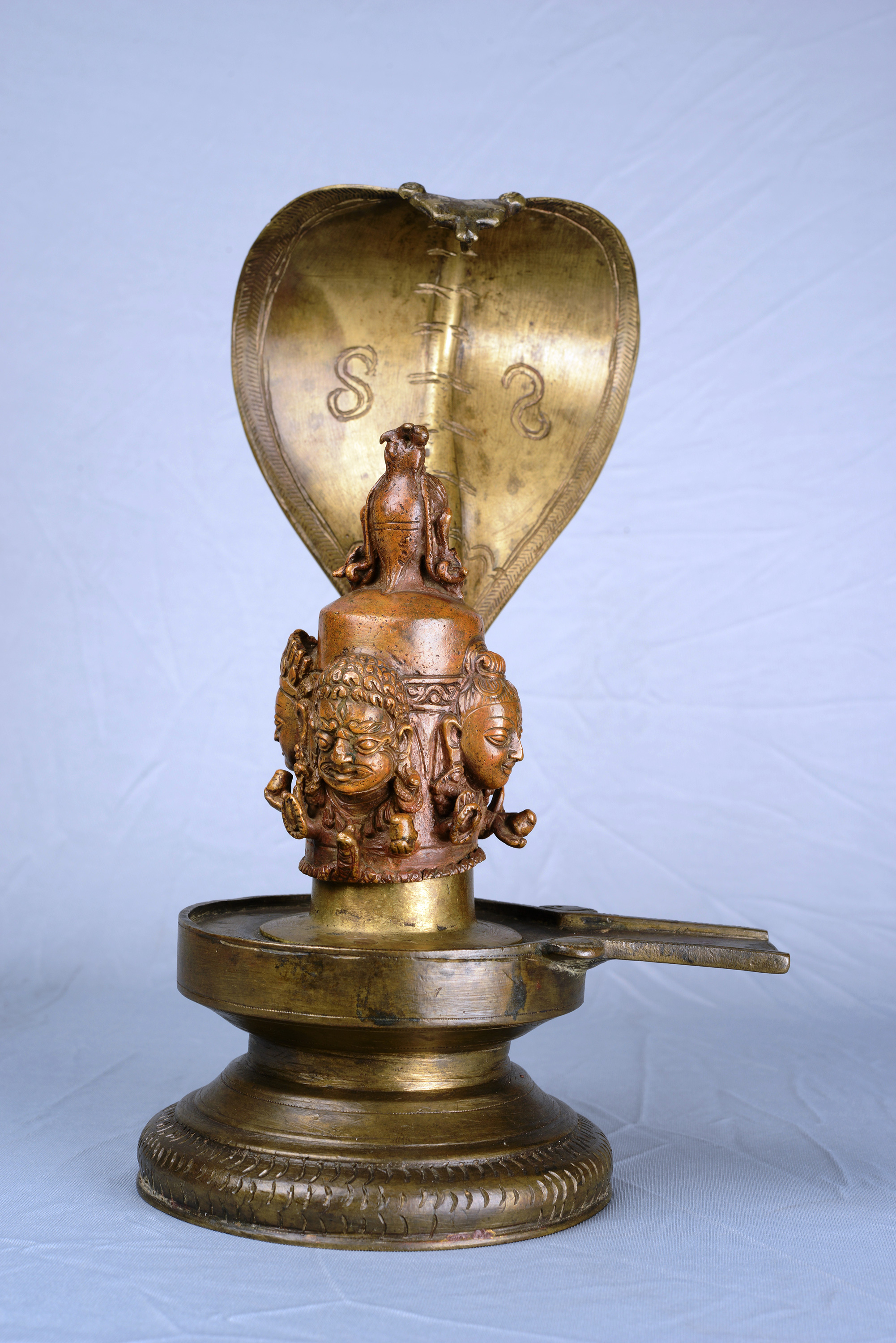Discover, Learn, immerse, Connect
Panch Mukhi Shivling
The Panchmukhi Shivling in consideration is originally from Himachal Pradesh and it can be traced back to the 19th century CE. This sculpture is made of bronze and is currently on display at the National Museum, New Delhi.
Mathura, is important not only as a phase where iconography was crystallized but also as a parallel to Gandhara phase, both of which served as a marked influence in the period and location of our concern here, Chamba. The first known Shiva-linga is enshrined in a temple in Guddimallam in Andhra Pradesh, dating from the 3rd century BCE. After that, it was from the 2nd century BCE that the Mathura sculpture saw a massive production of Mukhalinga sculptures. The point of interest in Mukhalinga images is how the iconic anthropomorphic image of the deity is combined with the aniconic form, that is, the linga. The Vedic abstractionism grows out of its iconoclasm to adapt to the changes in the religious landscape and incorporate image-making, moving closer to Puranic bhakti modes of religion.
This panchamukhi lingam was among the artefacts found in Chamba region of Himachal Pradesh. The creator and patron of the artefact remains unknown. As a mukhalinga, that is, a depiction of linga with faces on it, the Panchamukhi Shivalinga is markedly different from the simpler Shivalinga. It represents the five aspects of Shiva and along with that the five elements and the four cardinal directions. The five aspects of Shiva are Vamadeva, Tatpurua, Aghora, Sadyojata and Isana (Shiva as the Concealer, the Cosmic Being, the Destroyer, the Revealer and the Lord). The five-fold aspects also represent the five bodies or kosas in human beings, the five breaths, five directions, five elements, five senses and five colours.
The material used here is bronze. The materiality of the artefact probably draws from the idea of ashtadhatu, an alloy of eight metals as prescribed in the Shilpa Shastras. While the exact composition except for the bronze is not known, most metal artefacts were built with the notion of ashtadhatu at the centre even in cases where the alloy was not made out of eight elements. Like most Himalayan bronzes, the panchamukhi shivalinga retains a pale gold colour. To really understand the novelty of design and coming together of influence, it becomes important to look at the Kashmiri model of bronzes. It has long been argued that the work produced by Kashmiri artisans was not strictly Kashmiri by location but also by Himachali artists. The repute of the Kashmiri style was a big reason for artisans from neighbouring regions to emulate the style. It is marked by a stylised plinth design, a slimness, an adherence to classical design while integrating central Asian motifs, an elaborate system for jewellery and dress. Particularly with Shiva images, there is an emphasis on the depiction of the serpent. The image of Shiva by Chamba artists is made distinct by modelling a small mouth, well-marked eyes, eyebrows and a crown-like feature. It contains within its visual language an influence of a bodhisattva design, which is not surprising considering Himalayan bronze production had a dominant Buddhist iconography.
 Government of India
Government of India



